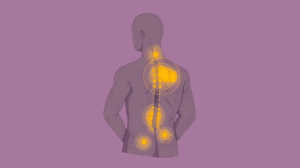Joint pain is a widespread health issue, which can influence millions of individuals worldwide irrespective of their age, lifestyle, and exercise intensity. Joint pain can also be experienced by young adults, particularly people who are overweight, who are not mobile enough, or who do repetitive tasks. It is believed that joint pain comes with old age. The pain can either end soon or persist a long time and become severe to the extent that it becomes difficult to move around and perform daily activities. Many individuals would not realize that their joint pains are deteriorating until they become a hindrance to their routine lives, such as walking, climbing stairs or even typing.
In order to manage the symptoms and maintain long-term joint health, one has to know about joint pain. Healthy eating, a physically active life, changes in lifestyle, and medical care may help a lot to increase the quality of life and prevent its further deterioration. This article aims to provide you with a comprehensive overview of the practices of maintaining the health and functionality of your joints by examining the causes, symptoms, diagnosis, treatment options, and preventive measures of joint pain.
Understanding Joint Discomfort
Joint discomfort ranges from mild stiffness to severe chronic pain and can result from overuse, injury, or chronic conditions like osteoarthritis and rheumatoid arthritis. Unlike sudden acute pain, it often develops gradually, with stiffness, minor swelling, or reduced mobility as early signs. Joints are complex structures: cartilage cushions bones, synovial fluid lubricates, ligaments stabilize, and tendons connect muscles to bones, so damage to any component can cause discomfort [1]. While commonly associated with aging, joint issues also affect young adults and athletes due to strain or poor posture. Contrary to myths, appropriate low-impact exercise and strength training can improve flexibility, strengthen muscles, and reduce stiffness.
Causes of Joint Discomfort
The causes of joint discomfort are varied and often interrelated. They include age-related degeneration, inflammatory conditions, lifestyle factors, injuries, and underlying medical issues.
1. Age-Related Degeneration
One of the most common causes of joint discomfort is age-related degeneration, particularly osteoarthritis. Osteoarthritis occurs when the protective cartilage covering the ends of bones gradually wears away. This loss of cartilage results in friction between bones, leading to pain, swelling, and reduced mobility. Cartilage naturally loses elasticity as people age, which is why older adults are more prone to stiffness and discomfort, especially in weight-bearing joints like the knees, hips, and spine.
2. Inflammatory Conditions
Inflammatory joint diseases are another major contributor to discomfort. Rheumatoid arthritis (RA) is an autoimmune condition where the immune system mistakenly attacks the synovial lining of joints, causing pain, swelling, and deformity over time. Gout is another inflammatory condition, characterized by the buildup of uric acid crystals in the joints, most commonly affecting the big toe but also the knees, ankles, and elbows [2]. Lupus, a systemic autoimmune disease, can inflame multiple joints simultaneously, leading to widespread discomfort and fatigue. These conditions not only cause pain but also significantly reduce joint function and mobility.
3. Lifestyle Factors
Modern lifestyle habits often contribute to joint discomfort. Obesity, for instance, adds extra pressure to weight-bearing joints such as the knees and hips, accelerating cartilage wear and increasing pain. A sedentary lifestyle weakens muscles around the joints, reducing stability and increasing the risk of strain or injury [3]. Conversely, repetitive movements, whether due to work or sports, can cause overuse injuries that damage joint tissues over time. Activities like running on hard surfaces without proper footwear or performing heavy lifting without correct technique are common contributors.
4. Injuries and Trauma
Joint injuries are frequent causes of both short-term and long-term discomfort. Ligament tears, such as anterior cruciate ligament (ACL) injuries, may heal but often leave the joint unstable [4]. Dislocations or fractures can lead to long-lasting stiffness and sometimes chronic pain if not properly rehabilitated. Sports, accidents, and falls are common scenarios where such injuries occur. Even minor injuries can exacerbate pre-existing joint conditions, accelerating degeneration.
5. Underlying Health Conditions
Certain health conditions also contribute to joint discomfort. Infections in the joint, known as septic arthritis, can cause severe pain, swelling, and fever. Endocrine disorders, including thyroid dysfunction, may indirectly affect joint health by influencing metabolism, muscle strength, and inflammation. Additionally, other autoimmune diseases, beyond RA and lupus, can inflame joints, making it essential to consider systemic health when evaluating joint discomfort.
Symptoms of Joint Discomfort
Joint discomfort manifests in several ways, depending on the underlying cause and severity. Recognizing these symptoms early is key to effective management.
1. Stiffness and Reduced Mobility
One of the earliest signs of joint discomfort is stiffness, especially noticeable after periods of inactivity, such as waking up in the morning or sitting for extended periods. Over time, this stiffness can worsen, making it difficult to perform routine activities like bending, walking, or lifting objects.
2. Swelling and Inflammation
Inflammatory conditions often lead to visible swelling around affected joints [5]. Swelling can cause warmth and redness, signaling active inflammation. This symptom is common in arthritis, gout, and lupus and can fluctuate in intensity, sometimes worsening during flare-ups.
3. Pain and Tenderness
Pain is a defining symptom of joint discomfort. It may be sharp or dull, constant or intermittent, and can be aggravated by movement or pressure on the joint. Tenderness around the joint often accompanies pain, making even minor touch uncomfortable.
4. Grinding or Popping Sounds
Some individuals experience grinding, popping, or clicking sounds when moving joints, a phenomenon known as crepitus. While occasional noises may be harmless, persistent or painful crepitus often indicates cartilage damage or alignment issues.
5. Progressive Functional Decline
Without intervention, joint discomfort may progressively worsen. Individuals may notice difficulty in performing daily tasks, a decline in athletic performance, or an inability to maintain normal activity levels. Over time, untreated discomfort can contribute to chronic pain, reduced independence, and a decline in overall quality of life.
Diagnosing Joint Discomfort
Accurate diagnosis is essential for effective treatment and prevention of further joint damage. Healthcare professionals typically employ a combination of physical examination, imaging, and laboratory tests.
1. Physical Examination
Doctors begin with a thorough physical assessment, checking for tenderness, swelling, redness, warmth, and range of motion. They may ask patients to perform specific movements to assess joint function, flexibility, and stability. Physical examination often provides the first clues about the underlying cause of discomfort.
2. Imaging Tools
X-rays are commonly used to assess bone structure, cartilage thinning, and osteoarthritis progression. MRI scans offer detailed views of soft tissues, including ligaments, tendons, and cartilage, making them invaluable for diagnosing injuries like ligament tears or meniscus damage. Ultrasound imaging is often employed to detect fluid accumulation or inflammation within the joint [6]. These imaging techniques complement the physical exam and help guide treatment strategies.
3. Laboratory Tests
Blood tests help identify inflammatory and autoimmune conditions. Elevated markers such as erythrocyte sedimentation rate (ESR) or C-reactive protein (CRP) indicate active inflammation. Specific tests like rheumatoid factor (RF) and antinuclear antibody (ANA) aid in diagnosing rheumatoid arthritis, lupus, and other autoimmune disorders. In cases of suspected gout, uric acid levels are measured to confirm crystal deposition in joints.
Diet, Nutrition, and Joint Health for Healthy Joints
Maintaining a balanced diet for healthy joints plays a crucial role in achieving long-term joint discomfort relief and managing common joint pain conditions in adults. Proper nutrition not only addresses the symptoms of joint discomfort but also supports overall musculoskeletal health. Including anti-inflammatory foods, calcium-rich dairy, omega-3 fatty acids, and antioxidant-rich fruits and vegetables can help reduce inflammation, strengthen bones, and protect cartilage, helping to manage joint pain causes and treatment effectively. Paying attention to nutrition can also slow down early signs of arthritis in joints and reduce joint stiffness in the morning, improving mobility and daily function. Alongside a healthy diet, integrating best exercises for joint pain such as low-impact stretching, strength training, and yoga, combined with joint pain home remedies can further enhance flexibility, prevent injury, and teach strategies on how to prevent joint pain in the long term. By combining mindful eating habits with consistent physical activity, you create a holistic approach to preserve joint health and maintain an active lifestyle.
4. When to Seek Medical Attention?
Persistent, severe, or progressively worsening joint discomfort warrants professional evaluation. Sudden swelling, redness, warmth, or inability to move the joint should be treated as urgent, as these could signal infection, acute injury, or severe inflammatory flare-ups. Early diagnosis and intervention are key to preventing long-term damage and maintaining joint health.
Relief Options for Joint Discomfort
Effectively managing joint discomfort often requires a combination of lifestyle changes, home remedies, diet, supplements, and medical care, depending on the severity and underlying causes.
1. Lifestyle Modifications
Low-impact exercises like swimming, cycling, walking, and yoga help maintain flexibility, strengthen muscles, and reduce stiffness. Maintaining a healthy weight eases pressure on joints, while proper posture and ergonomic adjustments prevent unnecessary strain.
2. Home Remedies
Heat therapy relaxes muscles and alleviates stiffness, while cold therapy reduces inflammation and swelling [7]. Balancing rest with gentle activity and using compression supports or braces can aid recovery and provide joint stability.
3. Diet and Nutrition
Anti-inflammatory foods such as fatty fish, turmeric, ginger, and leafy greens help reduce pain, while avoiding processed sugars, refined carbs, and excessive alcohol prevents worsening inflammation. Staying hydrated supports joint lubrication.
4. Supplements
Glucosamine, chondroitin, omega-3s, vitamin D, calcium, and herbal remedies like Boswellia or turmeric may support joint health but work best alongside diet, exercise, and medical guidance.
5. Medical Treatments
Over-the-counter pain relievers like NSAIDs or acetaminophen help manage pain. For severe cases, prescription medications, physical therapy, or surgical interventions such as arthroscopy or joint replacement may be necessary.
Exercises for Joint Health
Exercise is not only therapeutic but also preventive for joint health. A well-rounded program includes flexibility training, strength exercises, low-impact cardio, and range-of-motion activities.
Flexibility Training: Stretching exercises help maintain and improve joint mobility. Gentle stretches for major joints like shoulders, hips, knees, and elbows can reduce stiffness and improve daily function. Yoga and Pilates are particularly beneficial, as they combine flexibility, balance, and mindful movement.
Strength Training: Strong muscles provide better support and stability to joints, reducing the risk of injury and pain. Resistance exercises using body weight, bands, or light weights can target key muscle groups around the knees, hips, and shoulders, which are prone to joint discomfort.
Low-Impact Cardio: Activities such as swimming, cycling, and brisk walking are ideal for cardiovascular health without stressing the joints. Regular low-impact cardio enhances circulation, supports joint lubrication, and contributes to overall mobility.
Range-of-Motion Exercises: Gentle movements that take joints through their full motion help maintain functional capacity. Simple exercises like arm circles, ankle rotations, and knee bends prevent stiffness, particularly for individuals who spend long hours sitting or immobilized.
Safety Considerations: Overexertion can worsen joint discomfort [8]. Proper warm-up and cool-down routines, correct form, and gradual progression are essential. Consulting a physical therapist or fitness professional ensures exercises are safe and effective.
Preventing Joint Discomfort
Preventive measures are critical for reducing the risk of joint pain and maintaining long-term mobility.
Maintain a Healthy Weight: Excess weight strains joints, particularly the knees, hips, and lower back. Maintaining a healthy BMI helps prevent early cartilage degeneration and reduces the risk of osteoarthritis.
Stay Physically Active: Regular movement keeps joints flexible and muscles strong. Incorporating low-impact exercises, stretching, and strength training into daily routines helps preserve joint function.
Practice Correct Posture and Ergonomics:Proper alignment while sitting, standing, lifting, or using computers reduces unnecessary stress on joints. Ergonomic furniture, supportive shoes, and awareness of posture contribute to long-term joint health.
Protect Joints During Physical Activity: Wearing supportive footwear, using braces if recommended, and warming up before sports or heavy activities minimizes injury risk. Proper technique and equipment also prevent excessive strain.
Regular Medical Check-Ups: Routine examinations can detect early signs of joint degeneration or inflammatory conditions. Early intervention through lifestyle modifications, supplements, or medical treatment can significantly slow progression and improve outcomes.
Psychological and Lifestyle Impact of Joint Discomfort
Chronic joint discomfort affects not only physical health but also mental and emotional well-being. Persistent pain and reduced mobility can lead to stress, anxiety, and even depression. Individuals may struggle with the frustration of being unable to perform daily tasks, participate in social activities, or maintain work responsibilities. Over time, this can lead to social isolation, decreased self-esteem, and a sense of dependency.

Coping with joint discomfort requires both physical and psychological strategies. Mindfulness and meditation techniques help manage pain perception and reduce stress. Support groups provide emotional encouragement and practical advice from individuals experiencing similar challenges. Incorporating enjoyable, low-impact physical activities such as yoga or tai chi not only improves joint flexibility but also promotes mental relaxation and a sense of accomplishment. Recognizing the emotional aspect of joint discomfort is essential, as addressing mental health alongside physical care improves overall quality of life.
Myths vs Facts About Joint Discomfort
There are many misconceptions about joint discomfort, which can prevent effective management if left unaddressed.
- Myth 1: Only the elderly experience joint pain.
Fact: While aging increases risk, joint discomfort can affect younger adults due to injuries, repetitive strain, obesity, or autoimmune conditions. Early detection and care are crucial, regardless of age.
- Myth 2: Exercise worsens joint discomfort.
Fact: Appropriate low-impact exercises strengthen the muscles supporting joints, improve circulation, and reduce stiffness. Overuse or improper technique can aggravate pain, but guided exercise is beneficial.
- Myth 3: Supplements alone can cure joint pain.
Fact: Supplements like glucosamine, chondroitin, and omega-3s can support joint health, but they work best alongside a balanced diet, physical activity, and medical care when necessary.
- Myth 4: Rest is always the best remedy.
Fact: Prolonged inactivity can worsen stiffness and reduce joint function. Active recovery and movement are critical for maintaining mobility.
Future Trends in Joint Health
Advancements in medical science and technology offer promising prospects for joint health management. Regenerative therapies, such as stem cell therapy and platelet-rich plasma (PRP) injections, are increasingly used to repair damaged cartilage and reduce inflammation, offering hope for individuals with degenerative joint conditions [9].
Wearable technology and AI-driven monitoring are becoming valuable tools for tracking mobility, gait, and activity levels. These devices can provide early warnings of joint strain, helping prevent injury and guide personalized exercise programs.
Personalized medicine is another emerging trend, where treatments are tailored based on genetic, lifestyle, and health data. This approach allows for more effective management of chronic conditions like rheumatoid arthritis and osteoarthritis.
Robotic-assisted surgeries and minimally invasive techniques continue to advance, providing faster recovery, improved precision, and better long-term outcomes for patients requiring joint replacement or repair. As research progresses, combining technology, early detection, and innovative therapies will redefine joint care and improve patient quality of life.
Conclusion
Joint pain can be manageable once you know its diverse aspects. Various factors cause degenerative joint disease; among them are old age, trauma, poor habits, inflammation, and medical conditions. To avoid long-term issues and maintain your mobility, modifications in proactive lifestyle, immediate healthcare measures, and the early recognition of the symptoms are required.
A comprehensive plan will include weight management, low-impact exercise, change in eating habits, anti-inflammatory supplements, and medical or surgical intervention (when necessary). Holistic care is better because it addresses physical and psychological aspects of joint pain, which enhances overall health. The future outlook of joint health is bright as long as medical science and technology are still advancing to ensure future prevention of problems, personalized care, and overall improvement of human life.
Knee pain can be a cause for joint discomfort. Refer these to understand its key reasons for occurring and preventive measures:
Frequently Asked Questions
1. What are the most common causes of joint discomfort?
Joint discomfort commonly results from osteoarthritis, rheumatoid arthritis, gout, lupus, obesity, repetitive strain, injuries, and infections.
2. How can I differentiate normal stiffness from arthritis?
Stiffness lasting less than 30 minutes that improves with movement is usually mild. Persistent stiffness with swelling, redness, or pain may indicate arthritis and requires evaluation.
3. Can diet and supplements reduce joint pain?
Yes. Anti-inflammatory foods such as fatty fish, turmeric, and leafy greens, along with supplements like glucosamine, chondroitin, and omega-3 fatty acids, can support joint health.
4. What exercises are best for stiff joints?
Low-impact activities such as swimming, walking, yoga, Pilates, and stretching routines improve flexibility, strengthen muscles, and reduce stiffness.
5. When should I see a doctor for joint discomfort?
Seek medical attention if you experience severe or persistent pain, swelling, redness, warmth, limited mobility, or sudden injury to the joint.
References (APA Style)
- Wooley, P. H., Grimm, M. J., & Radin, E. L. (2005). The structure and function of joints. Arthritis and Allied Conditions. A Textbook of Rheumatology, Lippincott Williams & Wilkins, Philadelphia, 149-173. https://www.researchgate.net/profile/Mary-Barbe-2/publication/226788729_Structure_and_Function_of_Joints/links/0912f514725e3edf92000000/Structure-and-Function-of-Joints.pdf
- Cha, Y., Lee, J., Choy, W., Lee, J. S., Lee, H. H., & Chae, D. S. (2024). Pathophysiology and treatment of gout arthritis; including gout arthritis of hip joint: a literature review. Hip & pelvis, 36(1), 1. doi: 10.5371/hp.2024.36.1.1
- Lurati, A. R. (2018). Health issues and injury risks associated with prolonged sitting and sedentary lifestyles. Workplace health & safety, 66(6), 285-290. https://doi.org/10.1177/2165079917737558
- Hauser, R. A., Dolan, E. E., Phillips, H. J., Newlin, A. C., Moore, R. E., & Woldin, B. A. (2013). Ligament injury and healing: a review of current clinical diagnostics and therapeutics. Open Rehabil J, 6(1), 1-20. https://static1.squarespace.com/static/62167ce7f59bef755c582753/t/64c8120ae67969139f335e16/1690833419977/Woldin_Ligament_Injury_and_Healing_A_Review_of_Current_Clinical_Diagnostics.pdf
- Jacobson, J. A., Girish, G., Jiang, Y., & Resnick, D. (2008). Radiographic evaluation of arthritis: inflammatory conditions. Radiology, 248(2), 378-389. https://doi.org/10.1148/radiol.2482062110
- Iagnocco, A. (2010). Imaging the joint in osteoarthritis: a place for ultrasound?. Best Practice & Research Clinical Rheumatology, 24(1), 27-38. https://doi.org/10.1016/j.berh.2009.08.012
- Malanga, G. A., Yan, N., & Stark, J. (2015). Mechanisms and efficacy of heat and cold therapies for musculoskeletal injury. Postgraduate medicine, 127(1), 57-65. https://doi.org/10.1080/00325481.2015.992719
- Kumar, B., & Lenert, P. (2017). Joint hypermobility syndrome: recognizing a commonly overlooked cause of chronic pain. The American journal of medicine, 130(6), 640-647. https://doi.org/10.1016/j.amjmed.2017.02.013
- Goulian, A. J., Goldstein, B., & Saad, M. A. (2025). Advancements in Regenerative Therapies for Orthopedics: A Comprehensive Review of Platelet-Rich Plasma, Mesenchymal Stem Cells, Peptide Therapies, and Biomimetic Applications. Journal of Clinical Medicine, 14(6), 2061. https://doi.org/10.3390/jcm14062061























